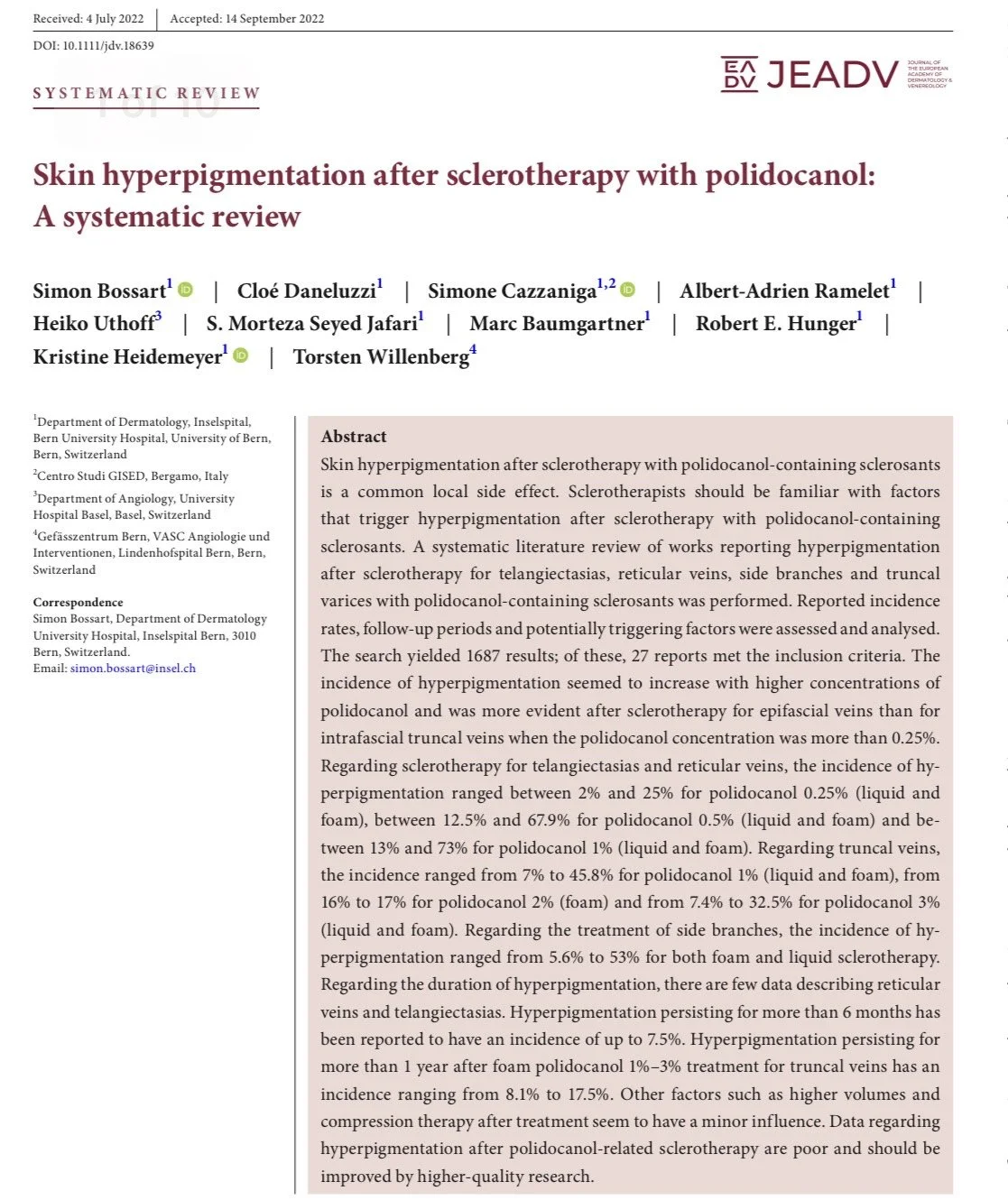Battling Brown Spots: Your Guide to Hyperpigmentation After Foam Sclerotherapy
Ever wondered about those bluish-gray marks that can appear after foam sclerotherapy? You're not alone! Hyperpigmentation, or skin discoloration along the treated vein, is extremely common and a well-known side effect of this vein treatment. Many patients describe it as a "semi-permanent bruise." It happens when the iron from your blood, called hemosiderin, stains your skin.
At my practice, with over 7,000 cases and six years of experience, we've seen it all when it comes to hyperpigmentation. Here's a look at what the research says, what we've observed, and, most importantly, how to speed up your recovery!
What We Know About Hyperpigmentation
Research and our experience largely align on several key factors influencing hyperpigmentation:
Deeper Veins, Less Discoloration: The deeper the treated vein, the lower the chance of visible hyperpigmentation. This makes sense, as the discoloration is further away from the skin's surface.
The Saphenous Fascia's Shield: That thin "housing" around your great saphenous vein, known as the saphenous fascia, acts as a natural barrier, helping to prevent skin discoloration.
Concentration Matters: Using higher concentrations of sclerosant in smaller veins and side branches is often linked to more noticeable staining.
Iron Intake and Staining: If you're taking additional iron supplements, you might be at a higher risk of experiencing hyperpigmentation.
Direct UV Light (Sun Exposure): Direct sun exposure can increase the risk of hyperpigmentation.
Where We Differ: Compression
Interestingly, things like the total volume of sclerosant used, multiple treatments, and compression therapy immediately after treatment didn't show any direct effects on hyperpigmentation in the research. However, I've found this isn't always the case in my practice.
Based on my hands-on experience, compression, particularly for superficial veins, is a game-changer! I've seen a significant difference with compression therapy, especially after treating epifascial (under the skin) varicose veins, spider veins, and reticular veins.
Applying an additional external compression device has dramatically helped reduce hyperpigmentation in many cases, and it is now embedded in a protocol that I strictly follow.
The Genetic Link
Here's an interesting tidbit: I've found that 50% of hyperpigmentation after sclerotherapy is genetic. This means I can often predict the likelihood of it happening even before we begin treatment!
Speeding Up Your Recovery: My Top Tips
Speeding Up Your Recovery: My Top Tips
Based on years of experience, here are my go-to solutions for quicker recovery and clearer skin:
Wear Compression Stockings: These aren't just physical barriers to prevent scratching. They also do a fantastic job of compressing any untreated tributaries, which can make a big difference in reducing hyperpigmentation.
Nourish Your Skin: Apply Vitamin C and a good moisturizer twice a day to the hyperpigmented areas. This can aid in the clearance process.
Exfoliate Regularly: Gently exfoliating your skin, whether with a chemical exfoliant like Kojic or lactic acid, or a physical one like a sugar scrub, can significantly help your skin heal and lighten those marks.
Apply Sunscreen Diligently: I highly suggest wearing SPF 30+ for indoors if you have many windows and SPF 50+ for outdoors. When engaging in activities like beach volleyball or frisbee, it's highly recommended to apply waterproof sunscreen every two hours.

